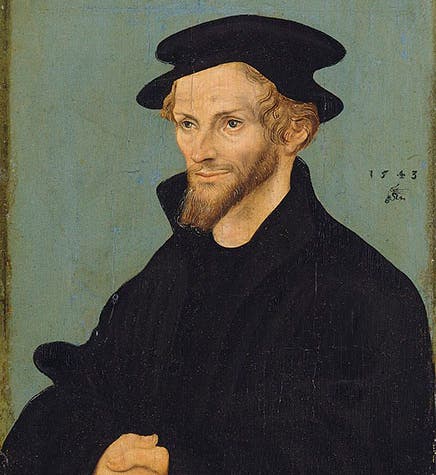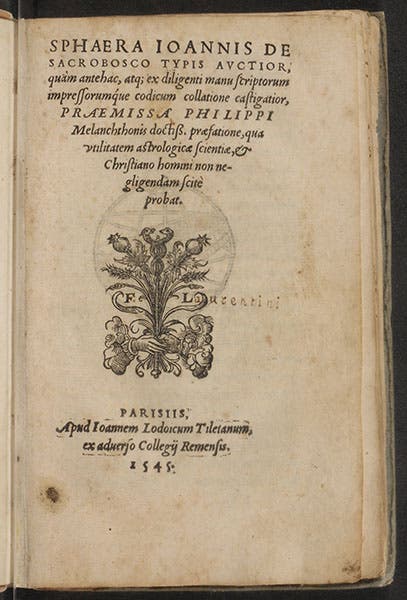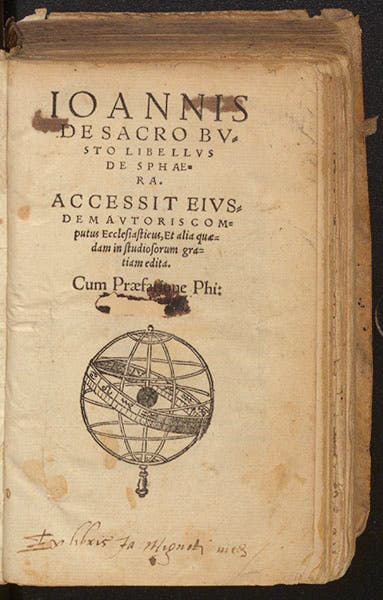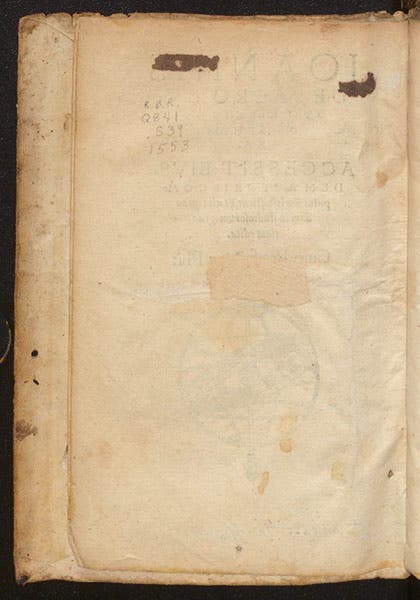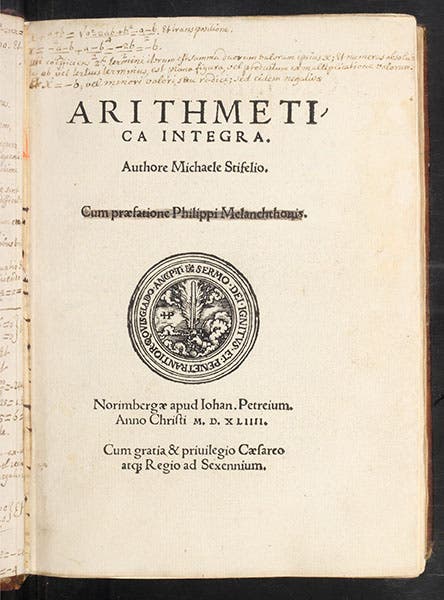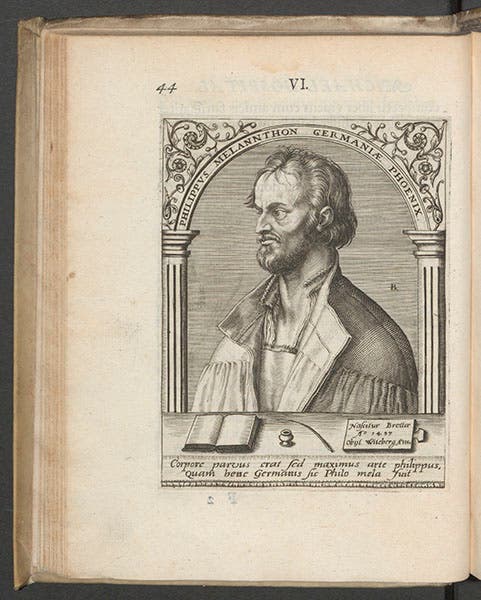Scientist of the Day - Philipp Melanchthon
Philipp Melanchthon, a German theologian, died Apr. 19, 1560, at age 63. Melanchthon, as the right-hand man of Martin Luther, played a key role in the Protestant Reformation, and through his position as praeceptor at the University of Wittenberg, he presided over the center and hotbed of German Lutheranism. But Melanchthon also took a keen interest in astronomy, because he thought that the regular and precise motions of the planets, and their predictable impact on human affairs, was the best example available of God's Providence. Astronomy demonstrated that God has worked everything out in advance, and we can be privy to his foreknowledge when we study the stars. To further the teaching of astronomy at Wittenberg, he hired two young astronomers, Erasmus Reinhold and Georg Joachim Rheticus, both of whom became ardent disciples of Copernican astronomy after Copernicus’ book, On the Revolutions of the Heavenly Orbs, was published in 1543. Wittenberg became the main center for teaching Copernican astronomy for the next generation. Interestingly, the "Wittenberg interpretation" of Copernican astronomy paid no attention to Copernican cosmology – the contention that the sun was really the center of planetary motion and the earth moved – but instead the Wittenberg astronomers followed Copernicus because they liked the astronomical devices with which Copernicus predicted planetary motion. They especially liked the fact that Copernicus dispensed with the "equant" – a device used by the ancient Greek authority Ptolemy but which rankled Copernicus because it violated the Platonic principle that planets move only with motion that is uniform and circular.
Melanchthon himself was not a Copernican at all, and he especially despised the notion that the earth moved, since that clearly contradicted numerous passages in Scripture. But he felt strongly that if the Copernican calculating devices allowed us to predict the motions of the planets better, then it would allow us better to comprehend Divine Providence, and so should be pursued.
In 1531, Melanchthon wrote a preface for a new edition of The Sphere of Joannes de Sacrobosco. Sacrobosco’s Sphere was a medieval work and had been printed numerous times since the advent of printing, but never as a cheap octavo that students could afford. Melanchthon intended his edition of The Sphere as a textbook for students at Wittenberg, with his preface telling students why astronomy was an important avenue of study for a devout Christian. The book was often reprinted in student format, and nearly always with Melanchthon’s preface included. Our first edition with the preface is one of 1545, printed in Paris (second image, above).
But as editions of Melanchthon’s Sacrobosco spread into Italy, many Catholic readers were not pleased to have the name of a Lutheran heretic so prominently displayed in the book, on the titlepage and at the beginning and end of the preface. Some of those displeased took action and attempted to remove Melanchthon’s name from their copy. We have a 1553 edition of Sacrobosco, in which Melanchthon’s name has been burned from the title page and repaired with a scrap of paper pasted on the back, so there is now a blank space where the name of Melanchthon used to be (third and fourth images, above). Melanchthon’s name is also crossed out on the first page of the preface.
Melanchthon’s preface was sometimes included in astronomical books other than Sacrobosco’s Sphere. We have a copy of Michael Stifel’s Arithmetica integra (1544) where the full name of Philipp Melanchthon is crossed out on the title page, although lightly, as if the owner did not want to forget just who this heretic was, even if he did not approve of his theological stance (fifth image, above).
The most famous portrait of Melanchthon is one by Lucas Cranach the Elder, intended as a twin to a portrait of Martin Luther by Cranach (first image). We have in our collections several near-contemporary portraits of Melanchthon. We show one engraved by Theodor de Bry, after an engraving by Albrecht Dürer (1526), in a portrait book, Icones quinquaginta virorum illustrium (1597-99) by Jean-Jacques Boissard (sixth image).
Dr. William B. Ashworth, Jr., Consultant for the History of Science, Linda Hall Library and Associate Professor emeritus, Department of History, University of Missouri-Kansas City. Comments or corrections are welcome; please direct to ashworthw@umkc.edu.

